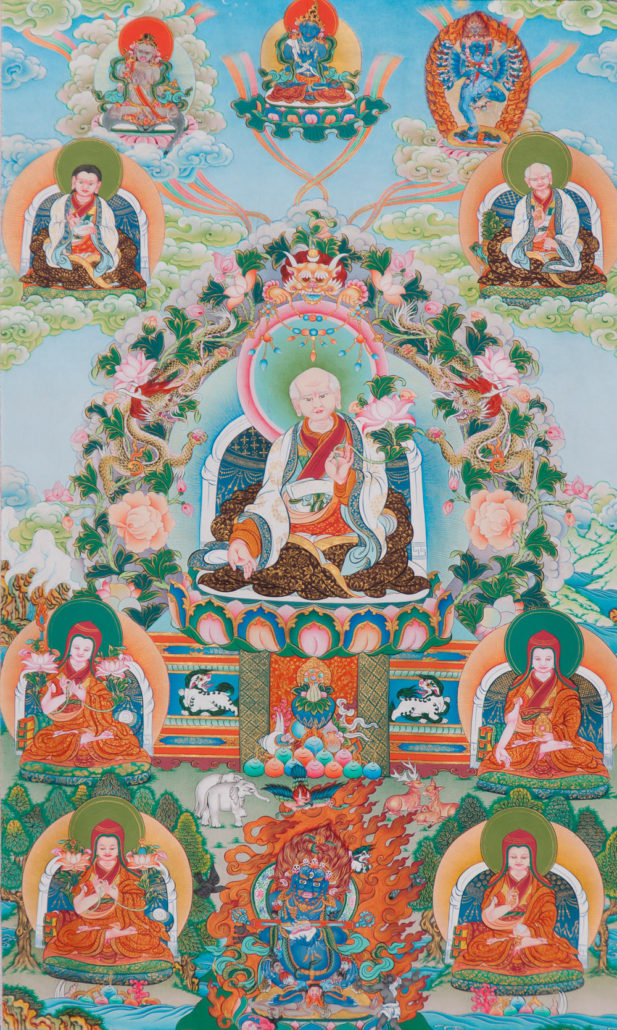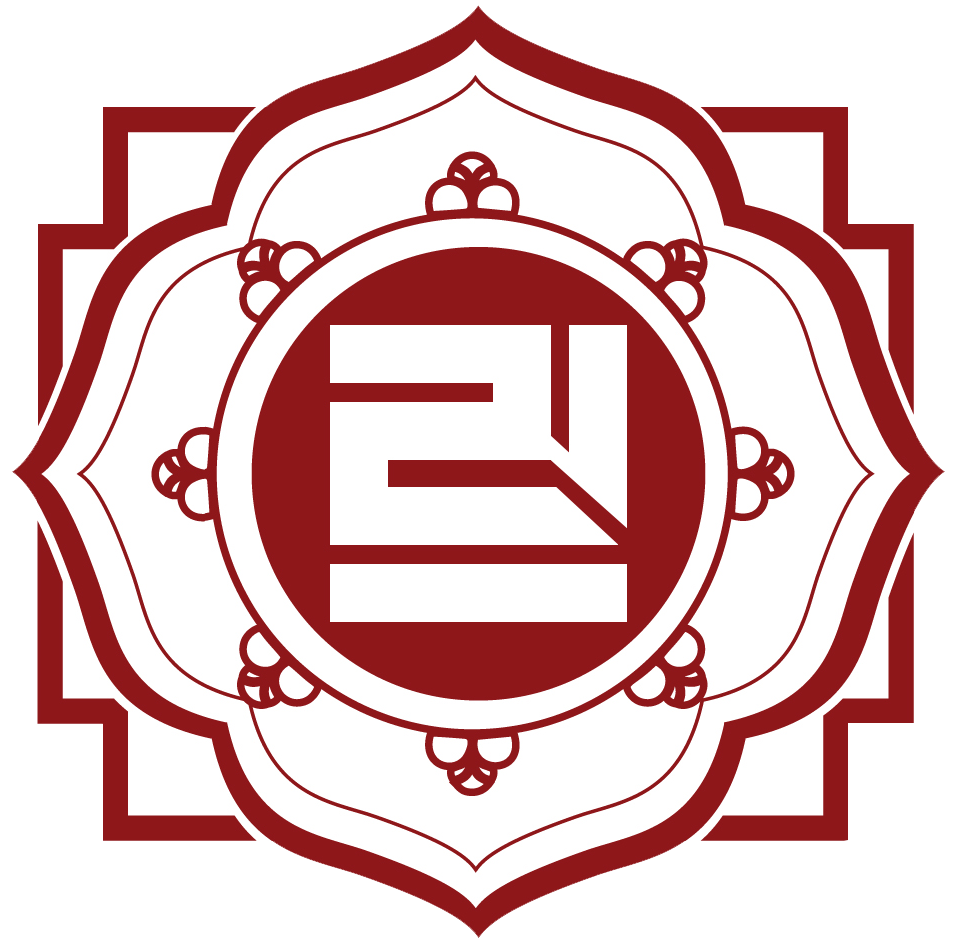The Sakya Tradition
For hundreds of years, the teachings of Lord Buddha spread from India to many countries with great success. In the fourth century A.D., during the reign of Dharma King Lha Tho Tho Ri Nyen Tsen, the Buddha Dharma was introduced to the Land of Snows. Five generations later, King Songtsen Gampo formally established Buddhism as the official religion of Tibet. Another five generations after that, Dharma King Trison Detsen invited the Bodhisattva Shantarakshita and the renowned Guru Padmasambhava to consolidate the vast teachings of the Sutras, Tantras, and Shastras in Tibet. These teachings are still preserved by the great masters of Tibetan Buddhism.
One of the great families of Tibet is known as the Khön family. The lineage of the Khön family can be traced back for thousands of years. The ancestors of the family were heavenly beings who descended directly from the heavenly realms. After a few generations, one of the Khön family members known as the Yapang Kye subdued the Rakshas and subsequently the family received the name ‘Khön.’
Several generations later, in 1073, a member of the Khön family, a renowned master called Khön Könchok Gyalpo, established the glorious Sakya School, one of the four schools of Tibetan Buddhism. Since that time successive generations of the Khön family have continued in an unbroken lineage. Many famous and great masters have appeared in this illustrious Khön lineage, including the five great founders of the Sakyapa Order: the Great Sachen Kunga Nyingpo (1092-1158), Loppon Rinpoche Sonam Tsemo (1142-1182), Jetsun Rinpoche Dragpa Gyaltsen, (1147-1216), Chöje Sakya Pandita (1182-1251) and Drogön Chögyal Phagpa (1235-1280). These were all emanations of Arya Manjushri (the manifestation of all the Buddhas’ wisdom), Avalokiteshvara (the manifestation of all the Buddhas’ compassion) and Vajrapani (the manifestation of all the Buddhas’ power).
In 1244 A.D., the Mongol King, King Godan Khan, Grandson of Gingis Khan, invited Choje Sakya Pandita and Drongon Chogyal Phagpa to China, where they stayed for some time. This established a Dharmic relationship between the Sakya School and the Chinese and Mongol people. Drogon Chögyal Phagpa invented the Mongol script. At the request of one of the Mongol Kings, Chögyal Phagpa became the King of Tibet.
So, from the inception of the Sakya School until the present, the members of the Khön family have played a very important role, particularly within the Sakya School itself, but also within Tibetan Buddhism in general. They have preserved and propagated the precious and profound teachings of Lord Buddha in many ways. They have composed numerous texts, which accurately explain the sacred and secret teachings of Lord Shakyamuni Buddha. Through composing treatises and participating in debate, they have been foremost in establishing a logical basis for belief in the teachings of the Lord Buddha.
The glorious Sakya Order flourished through an unbroken lineage of scholars and Mahasiddhas. The fame of the glorious Sakya Order spread to many places. Many ancient histories and texts by great scholars of all schools describe without exaggeration or sectarian bias how their holy efforts and activities spread the light of Lord Buddha’s precious teachings. The forty-first head of the Sakya Order, His Holiness the Sakya Trizin, was born as heir apparent of Vajradhara Ngawang Kunga Rinchen in the Dolma Phodrang (palace) to uphold and continue the precious lineage for the betterment of sentient beings.
Source (edited): www.hhthesakyatrizin.org

